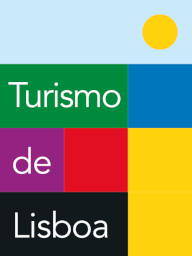Portuguese Paving Route
Artists
Pedro Calapez (Alhandra, 1953)
Having established himself as a painter in the first half of the 1980s, amidst the emergence of Post-Modernism, he led a parallel academic career, both as a teacher and as head of the design and painting departments at Ar.Co (1986-1998). Internationally renowned, he participated in the Venice (1986) and São Paulo (1987 and 1991) Biennials. He is the author of the abstract composition using Portuguese artistic paving conceived for Alameda dos Oceanos, more specifically for the area surrounding the refinery tower, where white graphic schemes scratch the black background, in great affinity with his pictorial universe. Transformed into a viewpoint for Expo 98 by architects Manuel Graça Dias and Egas José Vieira, only from the top of the tower can one grasp a complete understanding of the immense pavement, which could be interpreted as a possible city map.
Pedro Proença (Lubango, Angola, 1962)
Trained as a painter and a founding member of the "Homeostéticos" group, from early on this visual artist favoured a style based on a contemporary revisitation of the grotesque classics he reinterprets. The graphic aspect of the images and allegories of his artistic universe find an echo in his choice of «Marine Monsters», figurative compositions recreating the imagery that populated nautical cartularies, which he designed for the Portuguese pavement built in Cais dos Argonautas, for Expo 98.
Porfírio Pardal Monteiro (Pero Pinheiro, Sintra, 1897 – Lisbon, 1957)
One of the most important Portuguese architects from the first half of the 20th century, during the modernist turn of national architecture, and university professor at Instituto Superior Técnico. He designed some of the most emblematic buildings in Lisbon, such as the Cais do Sodré Railway Station (1926), the family house on Avenida 5 de Outubro, 207-215, (1926 - Valmor Prize 1929), the University Campus and buildings of Instituto Superior Técnico (1927) and the Statistics Portugal headquarters (1931), both of them displaying ample Portuguese paving work of his authorship; the Church of Nossa Senhora de Fátima (1938 – Valmor Prize of that year), maritime terminals Gare Marítima de Alcântara and Gare Marítima Rocha do Conde de Óbidos (1934), or the Ritz Hotel, currently the Four Seasons (1954).
Rigo (Funchal, 1966)
Artistic name adopted by Ricardo Gouveia, a Madeiran visual artist established in San Francisco, USA, since 1985, who favours public art in his work, especially murals in urban landscapes, with a strong political message. For Expo 98, he created a “water path” with Portuguese paving along Alameda dos Oceanos. A work of strong graphic impact where symbols and marine motifs converse with calligraphic signs.
Vhils (Lisbon, 1987)
Artistic name adopted by Alexandre Farto. A visual artist who stands out in the urban art of graffiti, especially with his bas-relief carved murals, and has pieces spread here and there all around the world. As proposed by Portuguese-French film director Ruben Alves, Vhils conceived his first Portuguese artistic pavement in 2015, using the iconic image of Amália Rodrigues. A pioneering form of Portuguese urban art, in this case rising from the ground and fading into the neighbouring wall.
